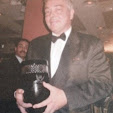Sunday, February 19, 2012
TED's DIGITAL JUNGLE -21ST CENTURY CONTENT REQUIRES 21 ST CENTURY FORM
21st CENTURY CONTENT REQUIRES 21ST CENTURY FORM
TED'S DIGITAL JUNGLE#7
Have not updated blog in a while, since we have been very busy developing new formats for our Congolese programming. Am happy to say that the result, MONUC REALITES, a weekly magainze show, is now up and running, and has been a hit, both with the Congolese as well as our supervisors. ( see www.YouTube.com/MONUCVIDEO )
The challenge was common enough- – how to put accross the MONUC message to the Congolese TV audience – but our solution has been a radical one. No longer are we employing a style that mimics what documentary scholar Patricia Aufderheide rather devastatingly terms:” regular documentary – a film with sonorous, “voice-of-God” narration, an analytical argument rather than a story with characters, head shots of experts, leavened with a few people-on-the-street interviews, stock images that illustrate the narrator’s point( often called “b-roll” in broadcasting, perhaps a little educational animation and dignified music.” ( DOCUMENTARY FILM -A VERY SHORT INTRODUCTION, p. 10)
This is the kind of “educational” film that became in vogue during World War II, thanks to John Grierson and the March of Time. and has been popular in institutional circles ever since. One of the major attractions of this approach is that it allows the bosses to closely scrutinize the text of the narration, and thereby control the content.
Or so they thought. I became painfully aware of the flaw in this premise some 30 years ago when some fellow screenwriters did a series of tests and discovered that many spectators paid no attention to the words being spoken, and were actually more influenced by the quality of the unseen voice delivering the lines. (Chalk up another victory for Marshall MacLuhan!) Of course, the music and the visual package were also important.
It never ceases to amaze me how many so-called media professionals appear to be oblivious to these realities – the most recent example being the esteemed former Vice-President’s exercise in didacticism which actually won him a Nobel Prize. While I have been preaching everything he said ( and a lot more!) for the past 35 years myself, I was stunned at the low level of media awareness displayed in the final product. ( and, as a Swede, I still cannot understand how they can give a Nobel Prize to a movie!)
Anyway, it took us a few months here to develop our new format. The goals was to create a vehicle which could relay reportages from the front lines in the eastern Congo to the entire country. The first task was helping our bosses to understand the technical realites of the Congo – bandwidth being what it is here, we cannot adhere to the 24 hour news cycle. Futhermore, getting around this huge country can be very time-consuming, particularly when covering events in remote areas. of which there are many.
Finally, we agreed on a magazine-style format inspired by CNN BACK STORY, with reportages from reporters on location introduced by an in-studio presenter. Our expert graphics designer provided a very cool look for the program, and we managed to find several excellent Congolese on-camera reporters to work both in the field and in the studio,
The ultimate compliment has come from the Congolese broadcasters, who air MONUC REALITES now in prime time, and we have received a lot of positive feedback. My favorite, perhaps, came from a Congolese cameraman who asked one of our Congolese cameramen how many cameras we used to shoot the program.
(The secret answer: one!)
The bottom line is that we are now producing what I would call ” good propaganda ” – we are putting out a worthy message, but in a form that the intended audience finds pleasing, and therefore wants to see,
©2011 Ted’s Digital Jungle
Subscribe to:
Post Comments (Atom)

No comments:
Post a Comment